“I followed him at the time and thought he was hysterical. He was the first serial killer, a new kettle of fish, because we didn't have the detection techniques in those days.” -Matthew Bright
You can't get mad at a team for trying the improbable, hoping that nature cooperates. Some of the most famous discoveries of all time have come about thanks to nothing more than mere serendipity, and so if we can test something at low-cost with an insanely high reward, we tend to go for it. Believe it or not, that's the mindset that's driving the direct searches for dark matter.
I've written about it dark matter many times before here, and if you want to catch up:
- Convincing a young scientist that dark matter exists,
- What dark matter's alternatives must do,
- The status of dark matter,
- The whole story on dark matter,
- Yes, we really, REALLY need dark matter,
- Why the Universe needs dark matter (and not MOND) in one graph,
- It'll take a lot more than AMS to find dark matter,
- What matters about dark matter, and most recently,
- The little bit of dark matter that we know.
That said, let's give a basic recap of dark matter: the idea, the motivation, the observations, the theory and then we'll talk about the hunt.
The idea. You know the basics: there are all the protons, neutrons and electrons that make up our bodies, our planet and all the matter we're familiar with, as well as some photons (light, radiation, etc.) thrown in there for good measure. Protons and neutrons can be broken up into even more fundamental particles -- the quarks and gluons -- and along with the other Standard Model particles, make up all the known matter in the Universe.
The big idea of dark matter is that there's something other than these known particles contributing in a significant way to the total amounts of matter in the Universe. Why would we think such a thing?
The motivation. We know how stars work, and we know how gravity works. If we look at galaxies, clusters of galaxies and go all the way up to the largest-scale structures in the Universe, we can extrapolate two things. One: how much mass there is in these structures at every level. We look at the motions of these objects, we look at the gravitational rules that govern orbiting bodies, whether something is bound or not, how it rotates, how structure forms, etc., and we get a number for how much matter there has to be in there. Two: we know how stars work, so as long as we can measure the starlight coming from these objects, we can know how much mass is there in stars.
These two numbers don't match, and they don't match spectacularly. There had to be something more than just stars responsible for the vast majority of mass in the Universe. This is true for the stars within individual galaxies of all sizes all the way up to the largest clusters of thousands of galaxies in the Universe.
The observations. This is where it gets fun, because there are a ton of them; I'll focus on just three. When we extrapolate the laws of physics all the way back to the earliest times in the Universe, we find that there was not only a time so early when the Universe was hot enough that neutral atoms couldn't form, but there was a time where even nuclei couldn't form! The formation of the first elements in the Universe after the Big Bang -- due to Big Bang Nucleosynthesis -- tells us with very, very small errors how much total "normal matter" is there in the Universe. Although there is significantly more than what's around in stars, it's only about one-sixth of the total amount of matter we know is there.
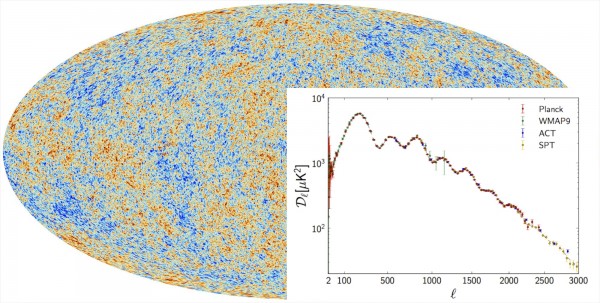 Images credit: P.A.R. Ade et al., Planck Collaboration, via http://arxiv.org/abs/1303.5062.
Images credit: P.A.R. Ade et al., Planck Collaboration, via http://arxiv.org/abs/1303.5062.
The fluctuations in the cosmic microwave background are particularly interesting. They tell us what fraction of the Universe is in the form of normal (protons+neutrons+electrons) matter, what fraction is in radiation, and what fraction is in non-normal, or dark matter, among other things. Again, they give us that same ratio: that dark matter is about five-sixths of all the matter in the Universe.
And finally, there's how structure forms on the largest scales. This is particularly important, because we can not only see the ratio of normal-to-dark matter in the magnitude of the wiggles in the graph above, but we can tell that the dark matter is cold, or moving below a certain speed even when the Universe is very young. This pieces of knowledge lead to outstanding, precise theoretical predictions.
The theory. This tells us that around every galaxy and cluster of galaxies, there should be an extremely large, diffuse halo of dark matter. This dark matter should have practically no "collisions" with normal matter -- upper limits indicate that it would take light-years of solid lead for a dark matter particle to have a 50/50 shot of interacting just once -- there should be plenty of dark matter particles passing undetected through Earth, me and you every second, and dark matter should also not collide or interact with itself, the way normal matter does.
There are some indirect ways of detecting this: the first is to study what's called gravitational lensing.
![Image credit: NASA, Andrew Fruchter and the ERO Team [Sylvia Baggett (STScI), Richard Hook (ST-ECF), Zoltan Levay (STScI)] (STScI).](/files/startswithabang/files/2013/10/Gravitational_lens-full-600x453.jpg) Image credit: NASA, Andrew Fruchter and the ERO Team [Sylvia Baggett (STScI), Richard Hook (ST-ECF), Zoltan Levay (STScI)] (STScI).
Image credit: NASA, Andrew Fruchter and the ERO Team [Sylvia Baggett (STScI), Richard Hook (ST-ECF), Zoltan Levay (STScI)] (STScI).
By looking at how the background light gets distorted by the presence of intervening mass (solely from the laws of general relativity), we can reconstruct how much mass is in that object. There's got to be dark matter in there, but from looking at colliding clusters of galaxies, we learn something even more profound.
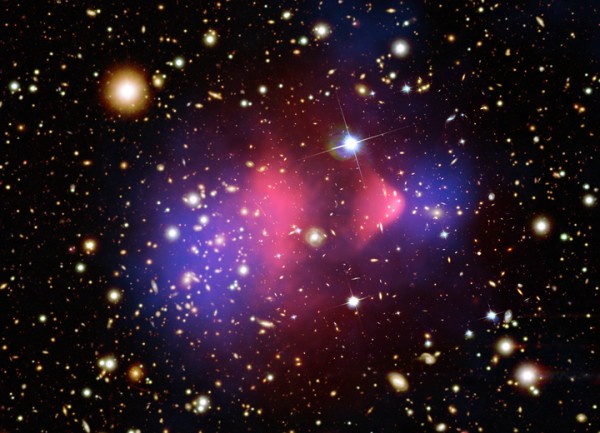 Image credit: X-ray: NASA/CXC/M.Markevitch et al. Optical: NASA/STScI; Magellan/U.Arizona/D.Clowe et al. Lensing Map: NASA/STScI; ESO WFI; Magellan/U.Arizona/D.Clowe et al.
Image credit: X-ray: NASA/CXC/M.Markevitch et al. Optical: NASA/STScI; Magellan/U.Arizona/D.Clowe et al. Lensing Map: NASA/STScI; ESO WFI; Magellan/U.Arizona/D.Clowe et al.
The dark matter really does pass right through one another, and accounts for the vast majority of the mass; the normal matter in the form of gas creates shocks (in X-ray/pink, above), and only accounts for some 15% of the total mass in there. In other words, about five-sixths of that mass is dark matter!
But that's indirect; we know there's supposed to be a particle associated with it, and that's what the hunt is all about.
The hunt. This is the great hope: for direct detection. Because we don't know what's beyond the standard model -- we've never discovered a single particle not encompassed by it -- we don't know what dark matter's particle (or particles) should be, should look like, or how to find it.
So we look at what we'd be able to detect instead, and look there. We can look for interactions down to a certain cross-section, but no lower. We can look for energy recoils down to a certain minimum energy, but no lower. And at some point, experimental limitations -- natural radioactivity, cosmic neutrons, solar/cosmic neutrinos, etc. -- make it impossible to extract a signal below a certain threshold.
Long story short: the latest experiment to search for dark matter directly didn't find it, at least not yet.
And that's okay! Unless dark matter happens to be of a certain mass with a certain interaction cross-section, none of the designed experiments are going to see it. That doesn't mean dark matter isn't real, it just means that dark matter is something else.
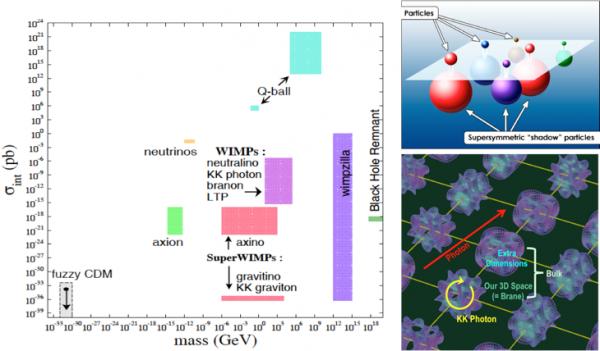 Image credit: Arisaka lab at UCLA, via http://home.physics.ucla.edu/.
Image credit: Arisaka lab at UCLA, via http://home.physics.ucla.edu/.
So we keep looking, we keep thinking of new possibilities for what it could be, and we keep thinking of new ways to search for it. That's what science at the frontiers is like. Personally, I don't expect these direct detection attempts to be successful; we're stabbing in the dark hoping we hit something, and there are little-to-no good reasons for dark matter to be in these ranges. But it's what we could see, so we go for it. If we find it, Nobel Prizes and new physics discoveries for everyone, and if we don't, we know a little more about where the new physics isn't. But just as you shouldn't fall for the hyper-sensationalized claims that dark matter has been directly detected, you shouldn't fall for the ones that say "there's no dark matter" because a direct detection experiment failed.
We are after the most fundamental stuff in the Universe, and we've only recently begun to understand it. It shouldn't be a surprise if the search takes a little -- or even a lot -- longer. In the meantime, the journey for knowledge and understanding of just what it is that holds the Universe together continues.


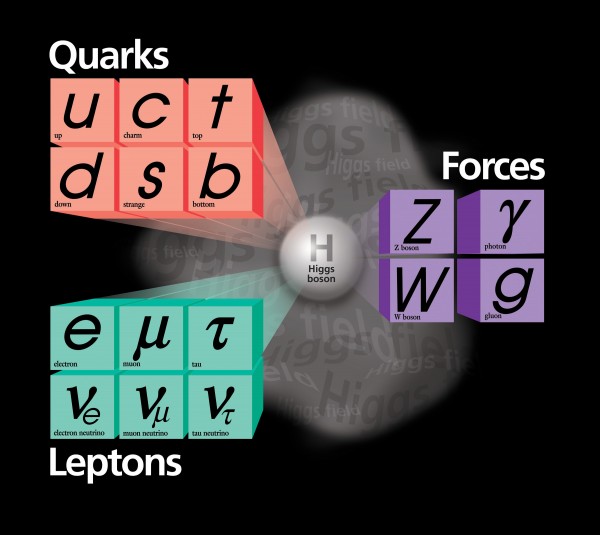
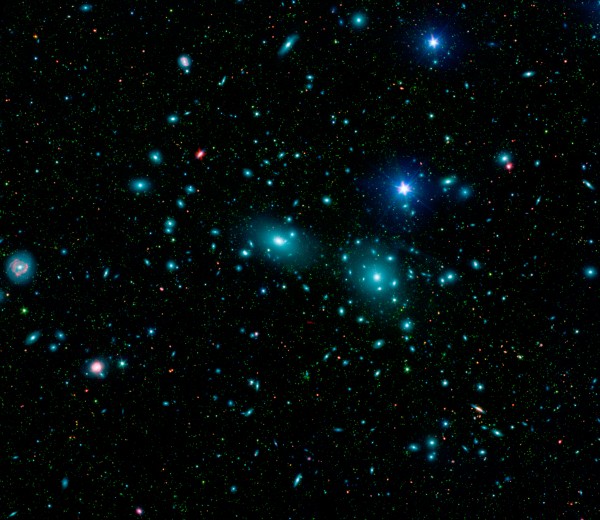
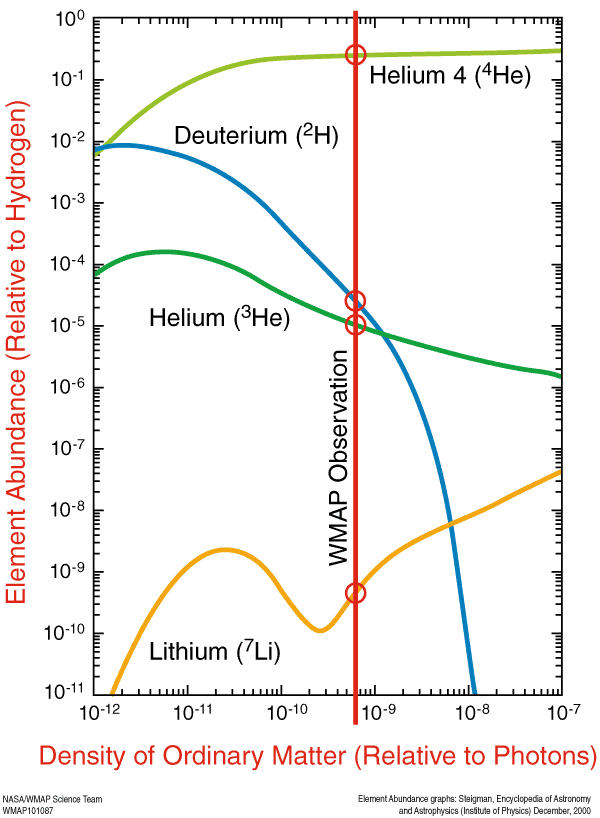
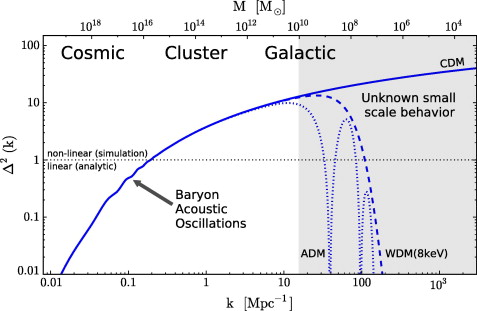



Are neutrinos a form of dark matter? As I understand it, the few we are able to detect are the unlucky ones among a sleet of neutrinos passing through the planet every moment, and we only ever see them if they nail a nucleus dead-on. Is that right?
@Artor #1: Short answers, "No," and "Yes."
"No.": Because neutrinos have (we infer) extremely low masses (no more than a millionth the mass of an electron), they move at relativistic speeds. If they constituted the dark matter, they would be so-called "hot dark matter" (i.e., fast moving). That is ruled out by the many lines of evidence Ethan mentioned in his article.
"Yes.": The several experiments which directly observe neutrinos (MINOS, OPERA, IceCube) do so by observing when a neutrino very occasionally interacts directly with a nucleus, converting into either an electron, a muon, or a tau lepton.
Artor: I believe in previous posts, Ethan has stated that neutrinos make up approximately 1% of dark matter.
Perhaps we could look at this from a different angle: What would a creature see if it were made of dark matter?
Nothing. Well, unless their eyeballs were thousands of light years across.
Photons would have to interact with the dark matter which isn't much denser than the average interstellar medium and dark matter can go through a few light years of solid lead without interacting.
So to see anything, such a creature would have to be thousands of light years across.
And there'd be no way to focus an image.
So, practically speaking, it would see nothing.
So could there be a whole dark matter universe existing in-between us all? Dark matter life occurring simultaneously to our normal matter existence?!
I don't know how you could even have a "creature." All the creatures we know about require interactions between various bits (atoms, molecules, etc...) to function. Dark matter doesn't even interact with itself.
Question. Dark matter evidently clumps, though much, much less than does light matter. It seems to me that any clumping at all means that DM particles must have some means of losing energy and therefor must interact non-gravitationally at least a little bit with each other or with light matter. Is it possible to use the observed clumping to estimate the cross-section for this interaction?
Why do we focus so much on 'missing mass' physical aspect? Isn't it equally as likely that we're misunderstanding time? Some sort of non-relativistic time dilation effect, or something similar, could affect the perceived velocity of an object to an outside observer. So, what if we are trying to solve the wrong end of the equation? Not sure if that makes sense...
Chris:
It makes perfect sense that the real solution could be that we need to revise our theory of space-time (which also happens to be our theory of gravity).
As far as "equally likely", well, it doesn't *appear* so. The observations we've made are all consistent with something that is behaving like a bunch of weakly-interacting matter which has its own dynamics and can get separated from regular matter etc. So between the two hypothesis "it looks like it's a kind of invisible matter because that's what it is" and "it looks like it's a kind of invisible matter, but it's not" I don't think you can ascribe them equal weight.
At least not until someone actually comes up with a specific idea that works. People have tried fixing the problem by modifying gravity, but while they can explain some observations they fail catastrophically at all the ones Ethan mentioned.
John Hassler: That's an interesting question. Keep in mind that objects can lose energy gravitationally; mere loss of energy and 'clumping' does not necessarily imply non-gravitational interaction. This happens in star clusters -- as they evolve, sometimes a star will get thrown out, while the star that it interacted with will lose energy and drift closer to the center of mass of the cluster.
We see it in the DM in galaxies, too, with a slightly higher concentration of it near the center.
So with that plus universal expansion plus the initial density fluctuations I *think* makes current observations all consistent with DM having zero self-interaction cross-section. I think there's a much better *upper* bound on this value.
CB: the mechanism you describe does not result in any net loss of energy. I cannot see how it accounts for the formation of clumps in a universe initially uniformly filled with particles that interact only gravitationally. A clumpy distribution of such particles has less energy than a uniform one. Where did the energy go?
John, the point is that they don't only interact via gravity.
That, right there, is your problem.
Wow: no, it isn't. Read my original comment. I noted that they *do* cluster and therefor *must* interact via something other than gravity. I then asked if the degree of clustering could be used to estimate the strength of that interaction. CB then asserted that they could cluster even with only gravitational interaction. I maintain that that would be equivalent to a gas condensing without losing heat.
It occurs to me now that interactionless DM particles could pass energy to light matter via multi-body gravitational interactions and of course the LM can get rid of it via radiation.
John: Um, nothing results in a net loss of energy. But things can result in one thing losing energy while another gains an equal amount. It's just like I was saying with the (globular) star clusters -- one star gains energy and moves farther away from the center of the cluster, possibly escaping entirely, while the other star loses energy and so moves closer to the center. The cluster clumps tighter together. Solely from gravitational interaction.
The universe was not precisely uniformly filled with particles. If it had been then there wouldn't be any structure at all, regardless of non-gravitational interactions. Those fluctuations in density, plus the rapid expansion of space, plus energy exchanges through gravity, results in the clumping.
John: It doesn't even have to be a multi-body interaction, and it definitely doesn't have to involve regular matter. Two stars can exchange energy such that one gains and one loses it -- *relative to the center of the cluster*. It's the same thing as a gravity assist maneuver -- gravity can't make two objects (such as a probe and a planet) change speed/energy relative to *each other* but they can cause a change in speed relative to the *sun*. The probe speeds up, the planet slows down.
Replace "star" with "dark matter" and "center of the cluster" with "center of the DM over-density" and there you go.
"Wow: no, it isn’t. Read my original comment. I noted that they *do* cluster and therefor *must* interact via something other than gravity"
And read your later comment:
"I cannot see how it accounts for the formation of clumps in a universe initially uniformly filled with particles that interact only gravitationally. "
The vastly stronger gravitational interaction is not the only interaction.
See Neutrinos.
Unlike Neutrinos (hot dark matter), this cold dark matter is moving slowly.
Neutrinos don't interact with matter much, but more readily (by being fast and light) than Dark Matter and Dark matter is more readily interacting via gravity.
CB's statements are about how gravity can cause a removal of energy from a cloud even when there is only gravitational interaction by ejecting some of it.
They also will interaction on a small cross section for some other interactions.
That small amount of change will help maintain a cloud of dark matter as a gravitationally relevant mass and therefore a reference frame for what constitutes "removal of energy" and "cloud" and "ejecting".
See this?
"But that’s indirect; we know there’s supposed to be a particle associated with it".
No, we don't. There's a huge assumption that dark matter has to consist of particles. but something as simple as a gravitational field is in its own small way an example of dark matter in the wider sense. That's because the field energy has a mass equivalence. And that field doesn't consist of particles. See The Foundation of the General Theory of Relativity page 185 where Einstein said "the energy of the gravitational field shall act gravitatively in the same way as any other kind of energy". Also see this paper: http://arxiv.org/abs/1209.0563 . I wouldn't say it gets everything right, but I do think it's barking up the right tree.
John, you're jumping a gun to try and beat science and you're making an arse of yourself.
According to QM, anything will be a particle.
EM: Photon.
Gravity: Graviton.
Mass: Higgs boson.
and so on.
So, yes, we do "know" that there will be a particle associated with it unless the physics is entirely broken and in ways that don't show up except here.
Wow: everything isn't a particle. The messenger particles of QED are virtual photons. They aren't actual particles. Hydrogen atoms don't twinkle., magnets don't shine. It's like you divide the field up into little squares and say each is a virtual particle. See comment #25 onwards in Ethan's weak-force blog entry:
http://scienceblogs.com/startswithabang/2013/10/04/ask-ethan-5-the-weak…
A gravitational field doesn't literally consist of particles called gravitons flying around. That's why you can detect a gravitational field quite easily by dropping your pencil, but you can't detect gravitons. Because they're virtual particles. Like you've divided the field up into little squares and said each is a virtual particle. And note that the Higgs mechanism is thought responsible for only 1% of the mass of matter. The rest is down to E=mc². So you don't "know" that dark matter consists of particles. OK? And by the way, Matt Strassler agrees with me on that.
"The messenger particles of QED are virtual photons."
Photons are particles, John.
Even when virtual, they are particles.
@ 20 John
The fundamental postulate of QM is that EVERYTHING (except maybe spacetime itself) in the Universe can be quantized into discrete packets of energy. Those packets being called particles.
Thus any field, force, energy, matter... whatever is that makes up our material world can be quantized. Thus DM.. whatever it is, can be quantized. It does have it's discrete energy packet value... it's particle
Sinisa: honestly, it doesn't work like that. The quantum nature of light is in the action h in E=hf. One way of expressing the dimensionality of action is momentum x distance. Think of action as "kick", then think of kicking a football. Your kick has a quantum nature because no matter how fast you kick the ball, the distance between your hip and your toe is always the same. I kid ye not, that's how it is. Look at some pictures of the electromagnetic spectrum and ask yourself what's the same regardless of wavelength.
A photon can have any energy you like, that energy has a gravitational effect, and yes, you can quantize it. But the photon isn't surrounded by some cloud of gravitons like flies round a horse. The photon is the only real particle there.
@ John
"Sinisa: honestly, it doesn’t work like that."
well John, sorry but it does.
I strongly urge you to touch up on QM. You clearly choose not to tackle where the problem is and instead put forward some silly analogies. Good place to start:
http://en.wikipedia.org/wiki/Quantization_%28physics%29
"The fundamental notion that a physical property may be "quantized," is referred to as "the hypothesis of quantization". This means that the magnitude can take on only certain discrete values."
This has nothing to do with what you are saying about photon having any energy.. Yes it can.. since you can tune wavelenght to anything. But you'll always have planks constant there in the formula.. that's the "quantizing" part. But why are you obsessing with EM? QM is not only about EM man.
"But the photon isn’t surrounded by some cloud of gravitons like flies round a horse."
Not a cloud... it's a mediator particle. And noone knows exactly how a photon and graviton can work together since GR is not renormalizable. You gave a pretty bad thought experiment.
@ John
p.s.
since you began with analogies, here's one concerning photon qunta. A photon is a can of Campbell's soup. You can have any mass/energy of soup in the can..... 0.0001 g or 1ton. The difference will be in density of soup (or wavelenght), but it will always come in the same can. That's what quantization means.
After reading some of the string theory popularizations, I got to thinking, given that the gravitational force is so much smaller than the others, could dark matter be this "excess" gravity leaking through a brane from some other universe?
@KeithB: No. It's much simpler than that. If you had some bottle of electrons and some bottle of protons, the force between them is fierce. However when you arrange those electrons and protons (or ions) as a current in a wire, the force between two wires is a relatively gentle "trace" of unbalanced forces. Then when you stop the electrons moving, it's gentler still.
@Sinisa: don't dismiss "silly analogies". Go and look at pictures of the electromagnetic spectrum. Planck's constant is a constant of action. Action is momentum x distance. You have to understand the h in E=hf before you move on to quantum gravity. Which, by the way, is easy when you know how!
"@Sinisa: don’t dismiss “silly analogies”."
Unless they're also wrong.
Then you can totally dismiss silly analogies.
@27 JD
" before you move on to quantum gravity. Which, by the way, is easy when you know how!"
you might want to write several mails to CalTech or Stanford or Perimeter and just let them know you exist and have solutions to biggest issues in physics these days.
Oh wait.. might want to write a paper and get published first. But what do I know... you kicks ass since QG is easy to you.
What a crackpot... ahahaha..
Still, quantum gravity or not, you are still wrong. Defferering all your replies from your original statement (that not everything is particle) is useless. Wave/particle duality applies to all. Period. Even DM.
In QFT everything is fields, and every quantum field has an associated particle. Not every excitation of the field is a particle, and virtual "particles" fall in this class, but every field will have particles.
In QED, which is a perturbation theory not a field theory, everything is particles. Virtual particles are real particles that you simply cannot observe because by definition their world line starts and ends at the two interacting charged particles.
Classical gravity of course does not have particles, but quantum gravity necessarily would or it wouldn't be "quantum", it'd be something else.
You could try to explain DM as the energy of a quantum field but with no particulate excitations involved, but I don't think you'd get very far explaining how we get the specific energy distributions we see based solely on a field with no particles that couple to or arise from that field present.
It seems like you read a couple of Prof. Strassler's articles, misunderstood them horribly, mixed that misunderstanding liberally with your own crack-pottery (which probably causes a lot of the previous problem), and come up with some nonsense you now want to claim his authority for. But since every time I've seen Matt respond to one of your comments it has been to say "you don't understand at all", that appeal to authority is dubious at best.
For what it's worth Matt does say DM might not be particles, in the broadest sense everyone agrees with that it could be modified gravity or completely knew physics, and in the specific sense that if DM consisted of condensed objects such as "dark stars" he'd say it was "dark stars" not "dark matter", even though particles would still be involved.
Nothing about particle-less quantum fields.
I should add that since you've figured out quantum gravity, and easily so, you have surpassed the good professor and all other physicists entirely.
Though before assuming that in the near future we'll all be saying "That's what John Duffield said" to put weight behind our arguments, I'd do something about your understanding of classical electromagnetism. The force between wires carrying a current is not a consequence of a "trace of unbalanced forces". Oh but if only I could affix some permanent magnets to Maxwell's corpse and wrap his coffin with wires....
@Ethan
Is there any particular reason why it is assumed that DM particles are weakly interacting? Could they possibly be particles that feel nothing but gravity at all? In which case any direct detection would probably be out of question.
Just curious.
@Alderamin #32: At some level, it's called "looking under the lamp post." :-/ If the "dark matter" (whatever it is) truly only interacts through gravity, then, as you say, it will be impossible to detect directly. The local density of DM is too small to observe gravitationally (as has been calculated, and which you could do yourself).
What I'm not sure about is what implications that situation would have for large-scale structure. The reason we focus on WIMPs is the so-called "WIMP miracle": Starting from the particle physics side, let's hypothesize some new particle (oh, let's say something supersymmetric :-) ) with a mass of a few tens of GeV and which couples only through the weak interaction. This particle could exist (and quantum physics tells us that anything not forbidden is compulsory :-) ), and is not ruled out by existing collider experiments' data.
Such a particle, if it exists, would have been produced in the early universe, at temperatures above about twice the particle's mass. Below that limit, the population of those particles would have persisted as the universe expanded (weak cross-sections are small enough that the particles wouldn't have time to fully annihilate before the expansion "pulled them apart").
If smart astrophysics theorists (not me!) work through the implications of that, and calculate what the density of such particles would have been in the early universe, they find (this is the "miracle" part) that the density is quite consistent with the density of dark matter we actually infer from cosmological data (that is, about five or six times the baryon density).
Now, all that, as you can clearly see, is built on a nice long chain of undemonstrated assumptions. The _data_ is the cosmological evidence for dark matter (which Ethan has presented here many times), together with the known (and well tested) physics of weak interactions. But we don't know if WIMPs exist; we don't know how they might interact with nuclei; there is some serious fine-tuning involved in having their self-interactions be strong enough to virialize them and form large-scale structure, but still be weak enough that they don't just annihilate away; and we certainly don't have any evidence for supersymmetry, which is what these things are supposed to be.
So we look under the lamp post, and continue setting limits.
@Micahel Kelsey
Thanks, Michael.
So to repeat it in my own wording, all supposed supersymmetric particles should interact weakly and they are assumed to be the best DM candidates, because they would explain the observed cosmic parameters as inferred from the CMB by WMAP and Planck, that's why it is assumed that DM is interacts weakly. But if no experiment should reveal anything, that would not mean that there is no DM particle, DM could just be something completely different than SS particles (for the existance of which LHC has found no evidence so far, yet).
So to the critics who claim that there is no DM, we could argue, that we aren't even completely sure if we have a chance to detect it directly at all.
@Alderamin #34: "Close enough for government work." :-)
In fact, there are SUSY particles which will interact strongly, electromagnetically, etc. However, the so-called "lightest supersymmetric particle" (LSP) is supposed to be stable (like the proton and electron, because there are no lighter particles of the same type to which it could decay). Those stable LSPs would only couple to matter through the weak interaction.
The rest of your restatement is correct. There are direct searches going on for other non-WIMP DM candidates, such as axions, but they also are currently only setting limits.
And to your final statement, I think those same critics might argue that if there is no way to detect the stuff directly, do we really have "scientific" evidence that it exists at all? Note that *I* am not making that argument, just trying to play Devil's advocate.
@Michael Kelsey
I had that argument already to my post #34, in the German Scienceblogs :-)
However, the difference to a pink invisible unicorn is that there is an observed effect to explain, so there must be something.
I'm not really into particle physics (I'm just an amateur astronomer), but I learned today that Axions, which are another candidate DM particle, should in fact not interact weakly, but they should be able to turn into photons and vice versa, which might be a way to detect them. Perhaps the (supposed) non-detection of WIMPs strengthens the case for Axions. But I'm aware that there's plenty of unexplored parameter-space in the WIMP domain as well. Time will tell.
"The big idea of dark matter ..."
I now have 2 decisive empirical tests of my theory of quantum gravity.
http://vixra.org/abs/1312.0193 “Is the space roar an empirical proof that the inflaton field exists?”
On 12/20/13 5:17 AM, David Brown wrote:
Prof. Witten: Do you have an opinion concerning the comments posted for?
http://quantumfrontiers.com/2013/11/05/fundamental-physics-prize-predic…
— D. Brown
On Fri, Dec 20, 2013 at 3:54 AM, Edward Witten wrote:
I am generally sympathetic with these observations
Edward Witten